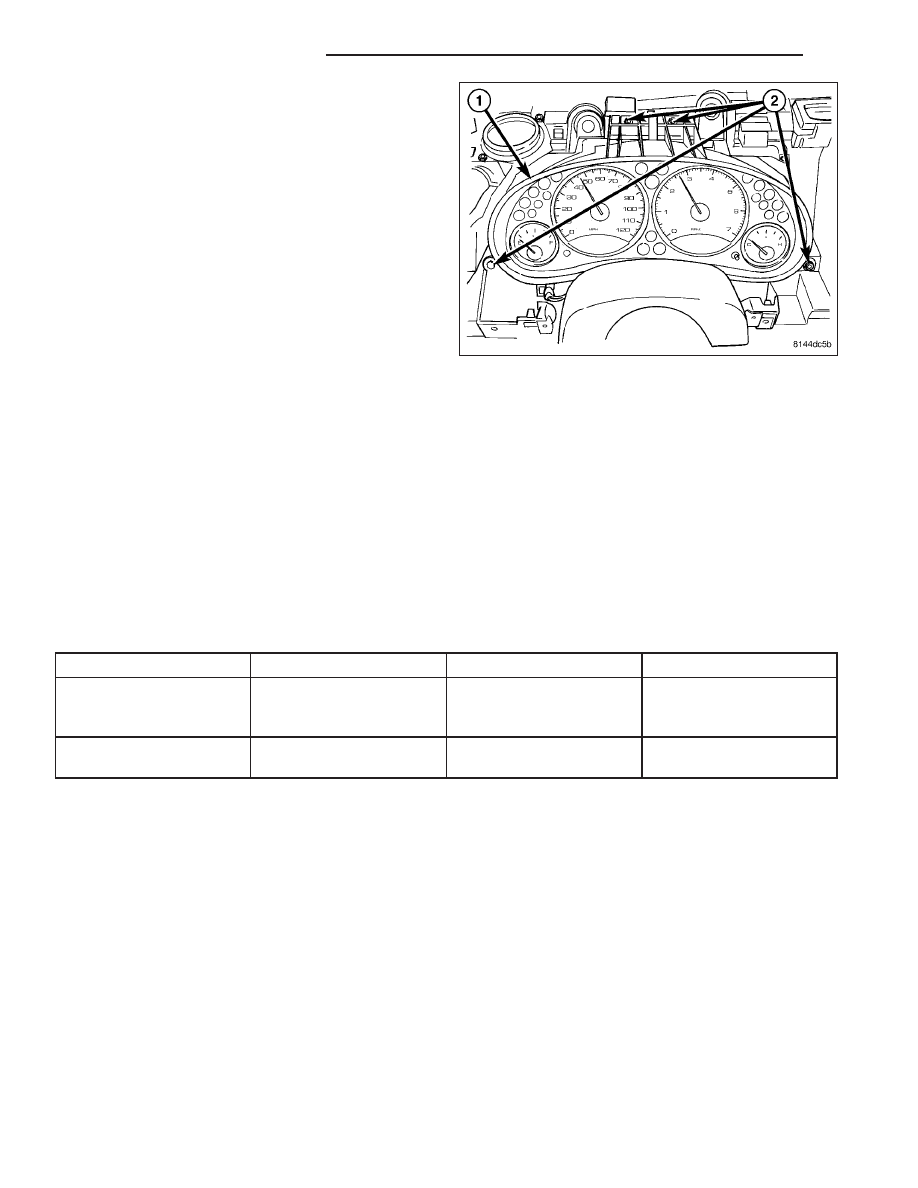Jeep Liberty KJ. Manual - part 75

1. Position the instrument cluster (1) close enough to
the instrument panel to reconnect the instrument
panel wire harness connector to the connector
receptacle on the back of the cluster housing.
2. Position the instrument cluster into the instrument
panel.
3. Install and tighten the four screws (2) that secure
the instrument cluster to the instrument panel.
Tighten the screws to 2 N·m (17 in. lbs.).
4. Reinstall the cluster bezel onto the instrument
panel. (Refer to 23 - BODY/INSTRUMENT PANEL/
CLUSTER BEZEL - INSTALLATION).
5. Reconnect the battery negative cable.
NOTE: If the instrument cluster has been replaced,
certain indicators in this instrument cluster will be automatically configured when the cluster is connected
to the electrical system of the vehicle. This feature allows those indicators to be activated for compatibility
with certain optional equipment. Some other indicators may require manual intervention to obtain proper
configuration for the equipment in the specific vehicle. If a problem is noted involving erroneous illumina-
tion of the ABS indicator, the airbag indicator, the electronic throttle control indicator, the Part Time indi-
cator or the Full Time indicator when the vehicle does not have the appropriate equipment, a diagnostic
scan tool must be used to manually enable or disable the correct indicator(s). Refer to the appropriate diag-
nostic information.
SPECIFICATIONS
INSTRUMENT CLUSTER
TORQUE SPECIFICATIONS
DESCRIPTION
N·m
Ft. Lbs.
In. Lbs.
Instrument Cluster Lens,
Hood and Mask Mounting
Screws
1
-
10
Instrument Cluster
Mounting Screws
2
-
17
8J - 106
INSTRUMENT CLUSTER
KJ